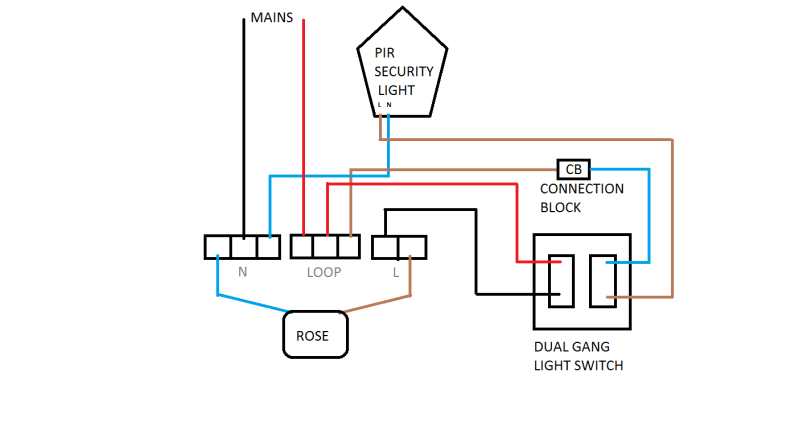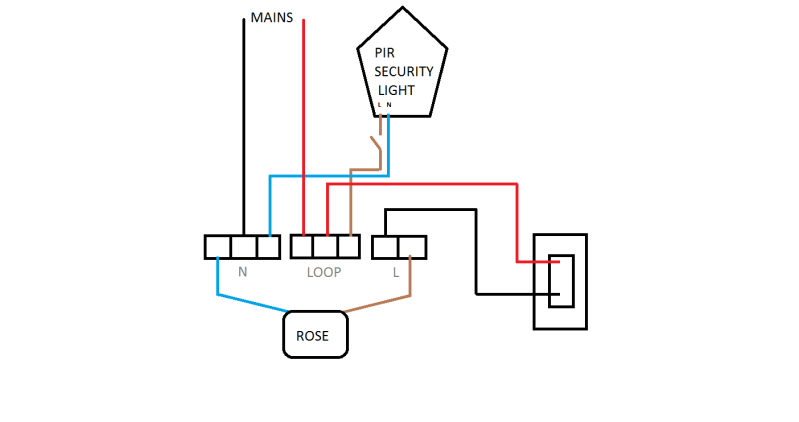Hi,
I'm a newbie here and am currently trying to wire in a new exterior PIR light but am a little confused as to how to wire in a switch.
There is no existing wiring so I have so far used this very helpful guide
(http://www.diynot.com/pages/el/el032.php#a0) to run a new wire from the exterior PIR light to an existing rose that is located on the entrance porch. I put a the live of the new PIR light into the loop of the rose and the neutral of the new PIR light into the two terminal block of the rose.
Now the existing porch rose has a single switch, but to keep things neat and tidy, i intend on changing this switch to a double gang switch and make one of these switches independently control the PIR light. Now the PIR light doesn't have as many terminals as a rose so i'm confused as to how the wires of the switch connect to the PIR light. The PIR light simply has L, N Earth and a LS.
Appreciate if someone can help shed some light into this (no pun intended )
)
I'm a newbie here and am currently trying to wire in a new exterior PIR light but am a little confused as to how to wire in a switch.
There is no existing wiring so I have so far used this very helpful guide
(http://www.diynot.com/pages/el/el032.php#a0) to run a new wire from the exterior PIR light to an existing rose that is located on the entrance porch. I put a the live of the new PIR light into the loop of the rose and the neutral of the new PIR light into the two terminal block of the rose.
Now the existing porch rose has a single switch, but to keep things neat and tidy, i intend on changing this switch to a double gang switch and make one of these switches independently control the PIR light. Now the PIR light doesn't have as many terminals as a rose so i'm confused as to how the wires of the switch connect to the PIR light. The PIR light simply has L, N Earth and a LS.
Appreciate if someone can help shed some light into this (no pun intended



